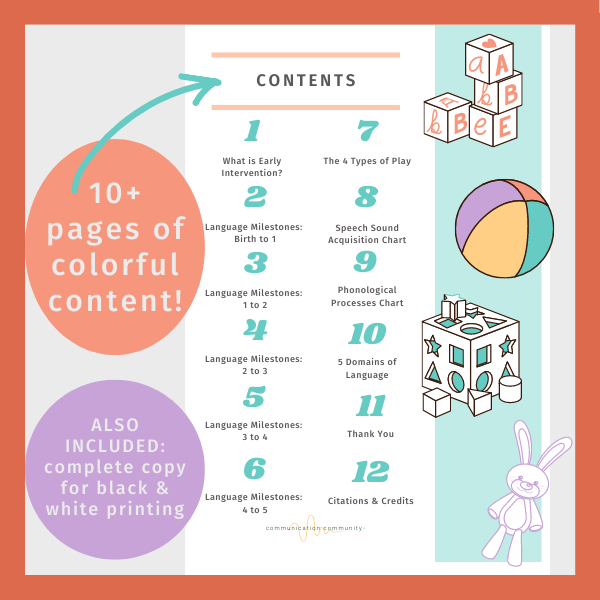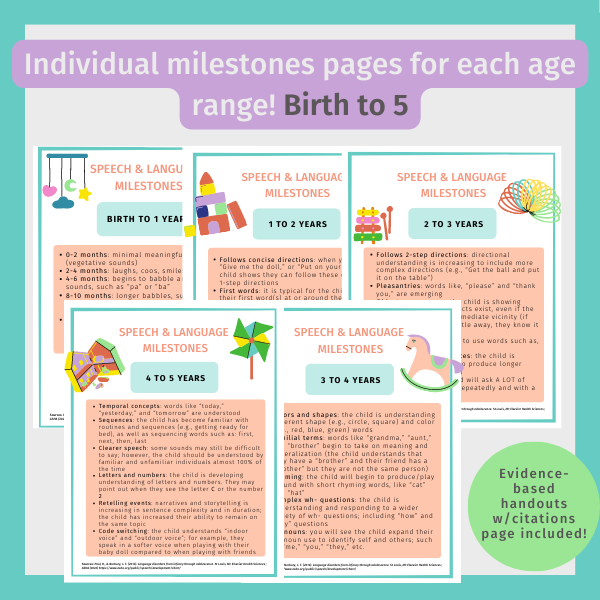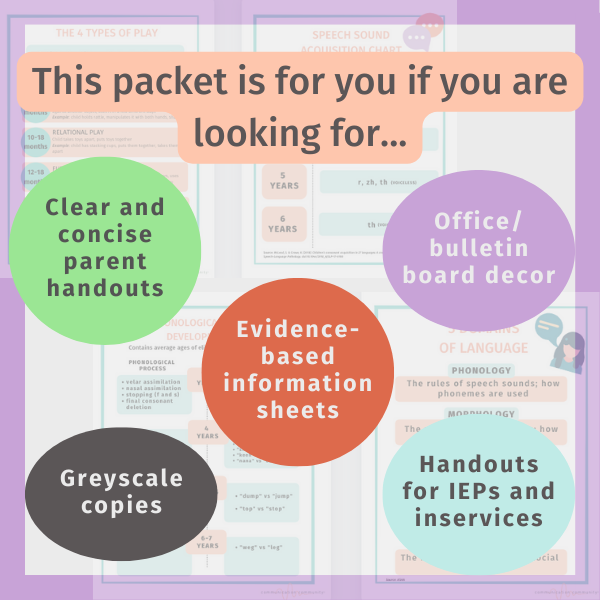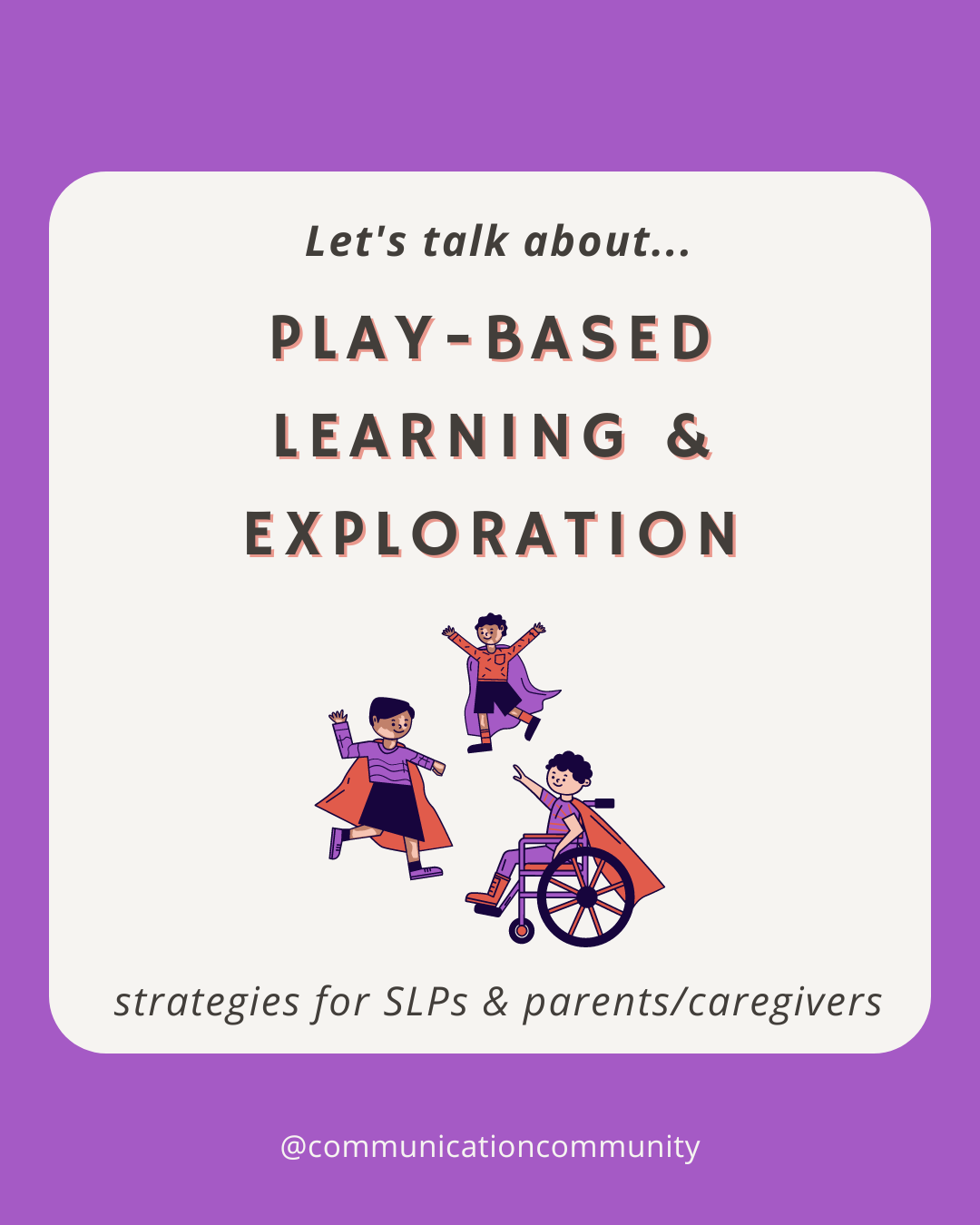Play and Child Development
Play is an integral part of child development. It is one of the most natural ways that children learn to interact with their world, solve problems, and develop new skills.
Strategies for incorporating play-based learning into instruction is something that is continually on the radar of both therapists and parents alike. I certainly can attest! Still, it can be challenging to find actionable strategies that are *engaging* for the child and also rooted in evidence-based practice. This post will focus on just that - speech therapy-based strategies that can be used within therapy and offered as home carryover. Let’s dive in!

Why is Play-Based Learning So Important?
Research consistently emphasizes the profound impact of play on a child’s cognitive, social, emotional, and—yes—you guessed it, linguistic development. Studies such as Ginsburg (2007) from the American Academy of Pediatrics show that play allows children to develop skills in problem-solving, turn-taking, and symbolic thinking, all of which are foundational to language development.
Play might look like a child…
doodling or drawing pictures on a foggy window
playing "I Spy" during a car ride
pretending to be a grocery store clerk or a doctor with their toys
Through play, children learn to understand the world around them. They naturally develop their vocabulary, learn sentence structure, and practice conversations—essential components for speech and language milestones. As Vygotsky pointed out, play is the "leading source of development in the preschool years" (Vygotsky, 1978).
There is No “Wrong” Way to Play!
Before we continue, we like to acknowledge that there are MANY different ways and variations to play! Play is an inclusive and flexible process. Whether it's solitary or social, indoors or outdoors, high-energy or quiet, each form of play offers unique developmental benefits. The key is to ensure a balanced mix to facilitate all-around development.
Strategies for Play-Based Learning in Speech Therapy Sessions
Check out some of our favorite quick and easy ways to incorporate play into speech therapy tasks as well as for home fun! Prior to a session, I may have a few toys/materials prepared that I know my client has expressed interest in and then follow their lead!
- Pretend Play: Use stuffed animals, dolls, or puppets to act out various scenarios. This can help in articulation practice, sentence construction, and vocabulary building, too.
- Interactive Games: Play games like Simon Says, Red Light/Green Light, or Hide and Seek that can be modified to incorporate specific speech and language goals.
- Story Cubes: Roll dice with pictures or words and encourage the child to create a story. This not only targets narrative skills but also stimulates imagination and vocabulary.
Play-Based Carryover Tips for Parents/Caregivers
If you can, and especially for our younger clients, INCLUDE parents/caregivers into therapy! This allows for a more hands-on look at specific play techniques and fluid carryover for home.
1. Echo and Expand
This is a simple technique during playtime - add onto what your child says! So if they say, “Car go,” encourage them to echo and expand by responding, “Yes, the car is going fast!”
2. Role-Playing Scenarios
Role-playing is a fun way to involve speech targets and scenarios that can easily be replicated at home. This may include going to the grocery store or doctor’s office.You might set up a ‘grocery store’ in your therapy session, and then suggest that parents/caregivers do the same at home to practice specific language targets (e.g., categorizing or matching items).
3. Parallel Talk
When your child is playing, narrate what they are doing. For instance, if the child is playing with blocks, you can describe what they are doing: “You’re building a tall tower with your blocks!”
4. Object-Based Play
For children working on vocabulary development, object-based play can be incredibly beneficial. Associating words with objects during play can solidify those connections in a child’s mind. For example, you can say, “This is a cow! The cow says ‘moo’!”
5. Visuals and Storyboards
Use visual aids or simple storyboards that can easily be referred to during playtime. This works well with children who positively respond to visual supports or for those who require more support to sustain attention/engagement.
Play and exploration provide endless opportunities for learning. Additionally, they are essential components when considering ways to strengthen a child’s complex speech and language system. Play is a multifaceted tool for development that expands as children grow, aiding them in learning important life skills in a context that is natural and enjoyable - as it should be!
Feel free to share this post with your colleagues, parents, and anyone interested in the powerful impact of play-based learning!
Looking for more resources for parents/caregivers?
Check out our Colorful Speech Therapy Handouts/Printables for Early Language!



Check it out in our TPT store - link here!
Or purchase right now via Gumroad!
Buy onReferences/further resources:
Ginsburg, K. R. (2007). The Importance of Play in Promoting Healthy Child Development and Maintaining Strong Parent-Child Bonds. American Academy of Pediatrics, 119(1), 182-191.
Vygotsky, L. S. (1978). Mind in society: The development of higher psychological processes.
Affiliate Disclosure: Please note that some of the links provided on our platform are affiliate links to Amazon. This means that, at no additional cost to you, we may earn a small commission if you decide to make a purchase through these links. We recommend products because we believe they are useful and beneficial, not because of the small commissions we might receive. Your support helps us maintain our community and continue to provide valuable content. Thank you for your understanding and trust!


